Are you ready for a unique party in which visual art, photography, performance, theatre, audiovisual art and music come together? At the Kunstenaarsbal in De Doelen you get a chance to dance, meet new people and enjoy art in a casual and informal atmosphere. The nocturnal setting on 11 February gives the art an extra dimension and the programming with media, art, electronic music and performance equals an exciting combination. From 8 to 12 February 2023 you can visit the exhibition, an adventure in which you get lost in a diverse collection of art. There will be a lot of interaction with the visitor, for example in the form of live artworks, workshops and the opportunity to meet artists and hear about their work. The exhibition offers space for both established and unestablished artists. Get ready for an incomparable experience in the art world! For the Rotterdam Art Week magazine we interview founder Fela Donker about the Kunstenaarsbal (Artist’s Ball).
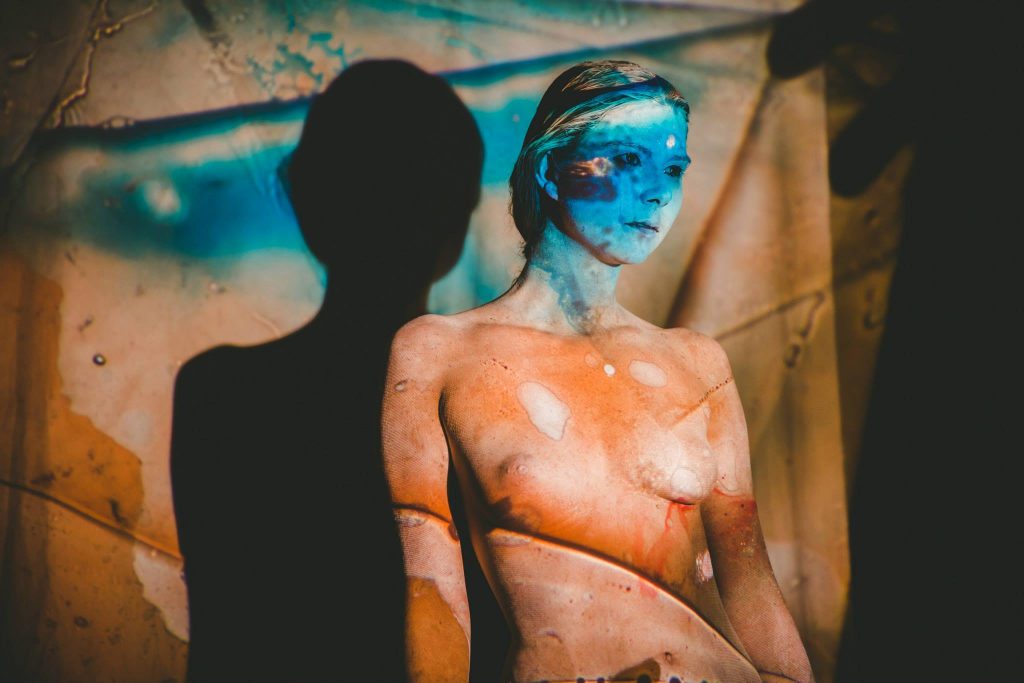
Can you offer us a glimpse of what we can expect during the Kunstenaarsbal this year? What is the ultimate highlight for you?
The whole evening is one big highlight I must say. Musically we have four areas and two secret areas. The Bird stage has very cool live performances by Arp Frique, Beau Zwart & de fam and Brintex Collective, among others. Yardbird does an urban sound with FS Green and Franky Sticks. In addition, there will be two electronic stages with NOW&WOW including Ted Langenbach, Elias Mazian and more
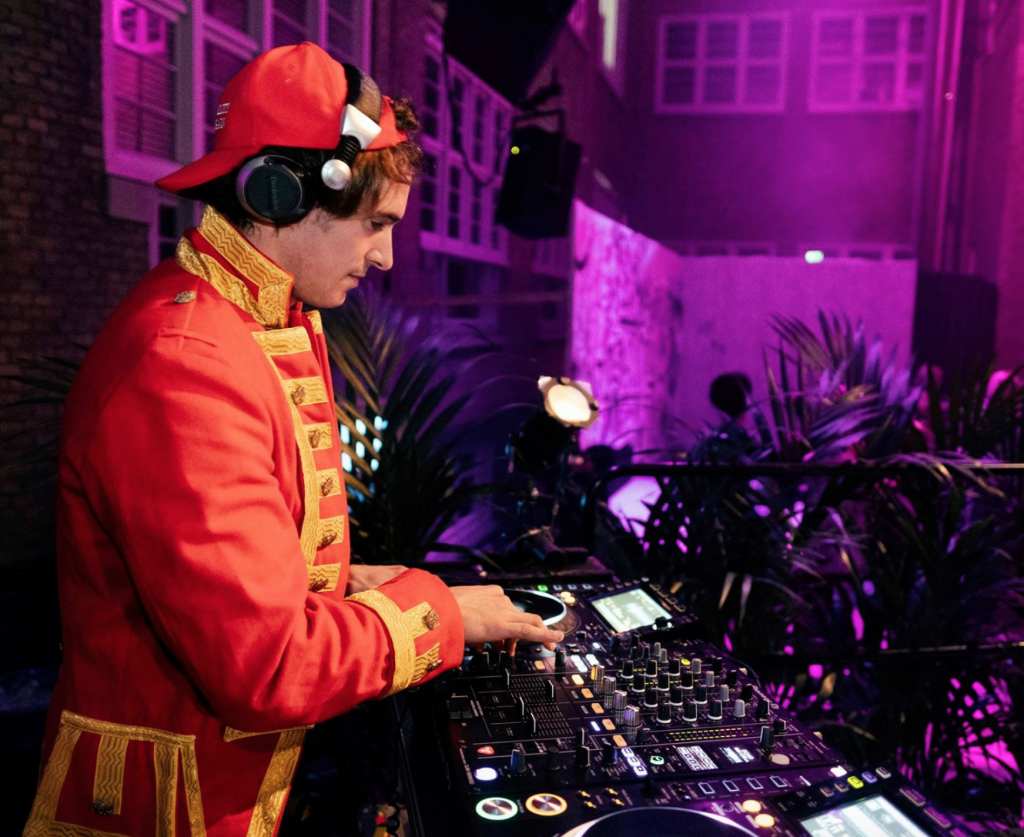
The Kunstenaarsbal is an event that revolves around experience and interaction in which almost all disciplines of the arts come together. It’s not just looking at art: at the same time you see how an artist makes a painting or how you can use your own creativity by controlling our visuals yourself or making art while dancing or watching live performances. It is precisely the combination of all these different art forms that come together that render the event unique.
What is so unique about this combination of media and art forms? What do you hope to surprise the visitors with?
In my opinion, only a few events really offers a total experience. It is often either a performance or an exhibition or a theater performance. We add these experiences up. And all this in a pearl of a location: De Doelen Rotterdam. This makes our event unique and will surprise the visitor. We also offer something for everyone in terms of music. In addition, the exhibition will be very large this year. It will be on show throughout Rotterdam Art Week (8 to 12 February) in De Doelen. We have 120 meters worth of walls and about 40 exhibitors. We offer Rotterdam-based talent a place in our exhibition free of charge, which also includes established names such as Frederique Spigt, Peter Klashort, Tymon de Laat and photographer Stacii Sadimin. As an artist myself, I know how difficult it is to participate in art fairs or exhibitions, because you often pay a lot for a piece of wall and then you just have to see if you sell something. Because we do not work like that, they get the visibility and the opportunity to sell work so that they get that extra push for their career.
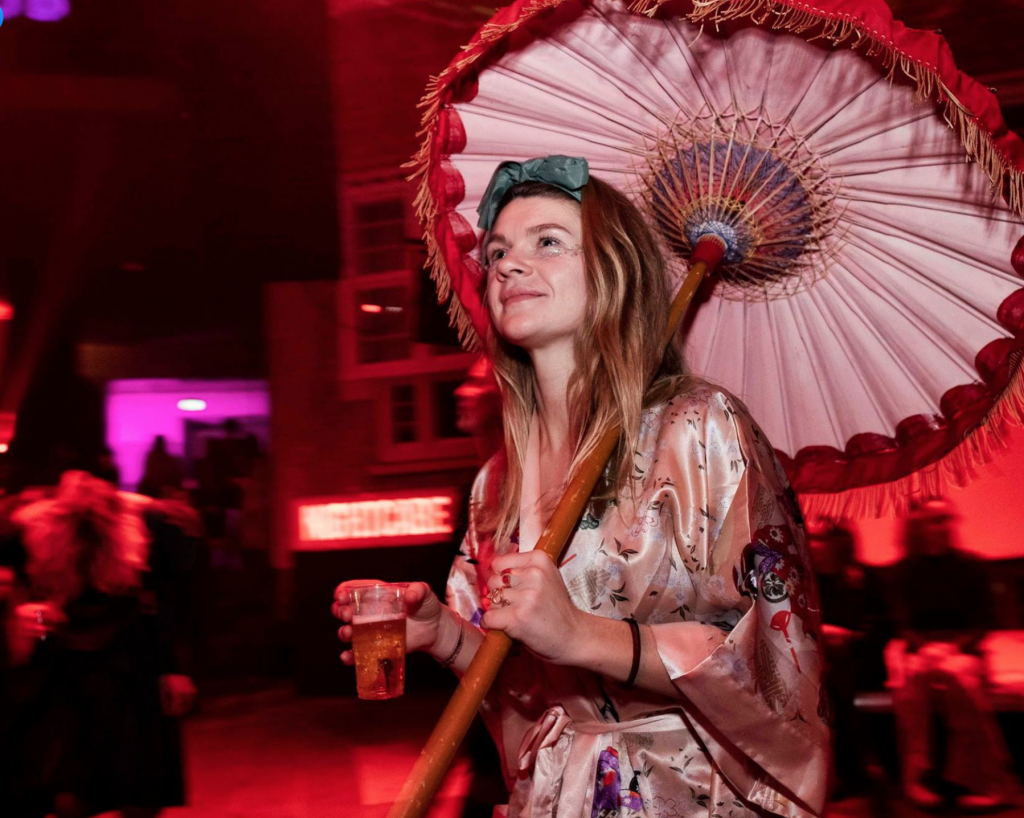
Have you run into any problems or have you perhaps made valuable contacts for the future?
Phew, where do I start haha. This is now the sixth edition, but it will be the first edition in Rotterdam, my own hometown. There is an awful lot involved. We artists are quite unique types, each with our own manual. If you want to organise a tightly organized event with more than 150 artists from all disciplines, that means that you’ll come across some challenges, but the most beautiful things arise from solving them. We run into things every day, that is part of organising events, but that’s also what makes it fun. We think in terms of solutions and not in terms of problems and there is always a solution to be found.
A lot has happened since my first contact with Rotterdam Festivals, in which we discussed bringing the Kunstenaarsbal to Rotterdam. Many valuable contacts have certainly resulted from this. I am very happy with the collaborations with Rotterdam Festivals, as well as working with Charlotte Nijsten of Rotterdam Art Week and our partner and location De Doelen.
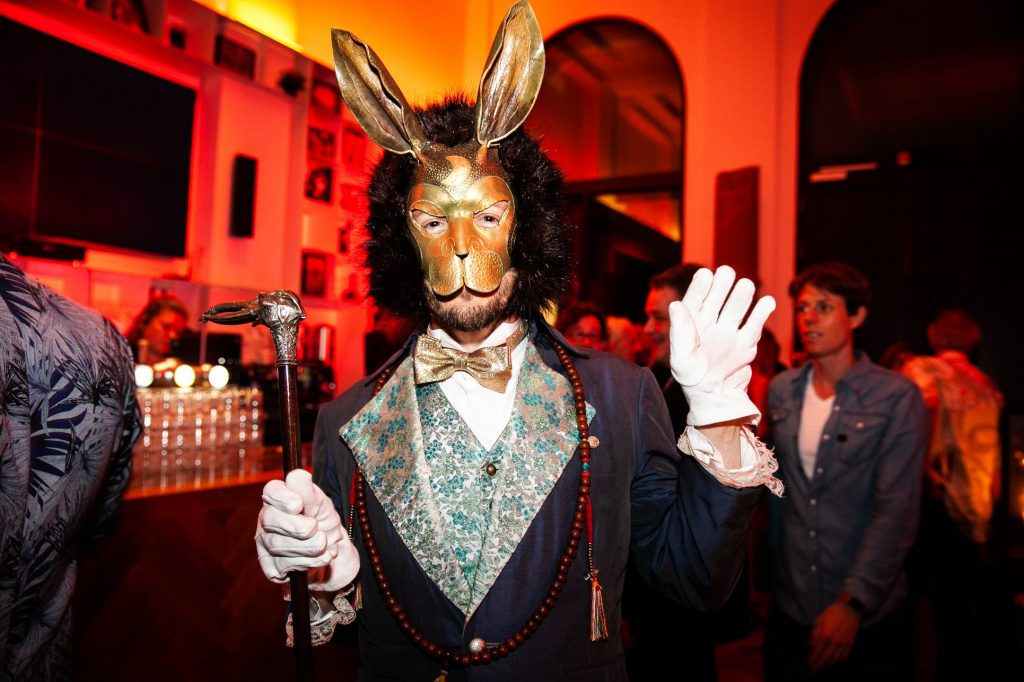
How would you describe your relationship with the city of Rotterdam?
I was born in 1988 and grew up in the city center of Rotterdam. I love the rawness and authenticity of both the city and its people. They tend to be nice and direct so you know where you stand. We are also generally hard workers in our port city: don’t just talk about it endlessly, actions speak louder than words. That’s how I am as well. I don’t feel more at home anywhere but in Rotterdam, although the whole world feels like my homeland because I have traveled a lot.
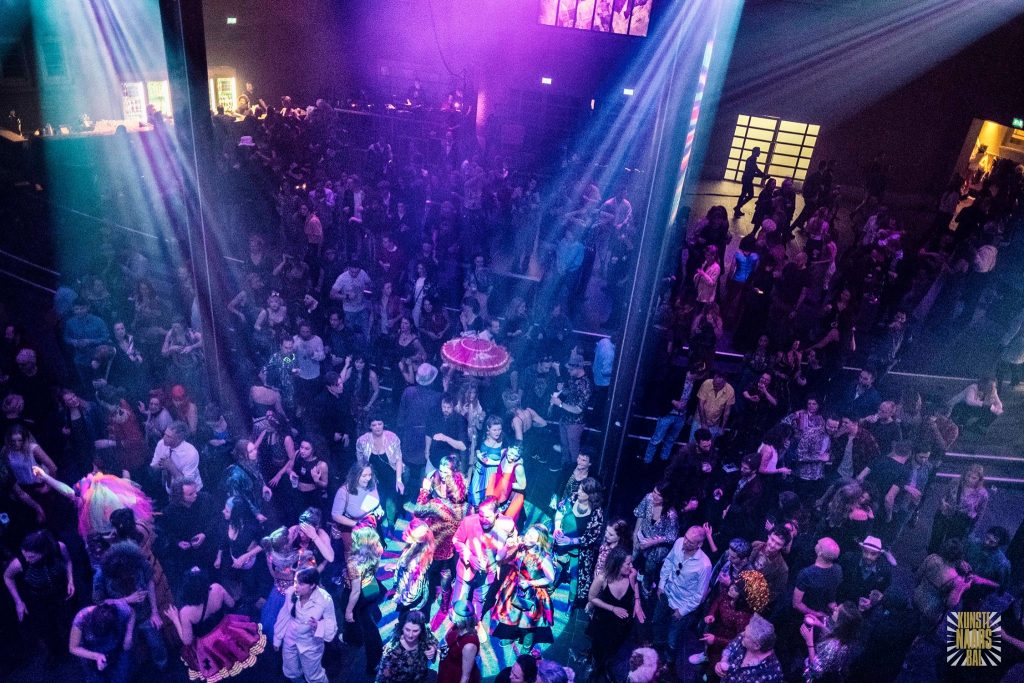
What else are you most looking forward to during the upcoming edition of Rotterdam Art Week?
I am especially looking forward to the breadth of the programme, the offer is great once again. I like to hop around from location to location. There is a lot to experience in M4H and of course the historic van Nelle Factory.
Buy your ticket for the Kunstenaarsbal here.
By Flor Linckens
Rotterdam has an internationally unique collection of more than 50 large public works of art in important locations in the city. At the same time, a new section has been added to Art Rotterdam this edition: Sculpture Park, financially supported by Stichting Droom en Daad. As a result, a special connection has been created this Rotterdam Art Week. read more
Art Rotterdam adds a unique element to its programming: Sculpture Park, a presentation of large-scale works of art that enter into a relationship with nature or the urban environment. Part of the space is also reserved for artists from Rotterdam or artists trained in Rotterdam. Sculpture Park revolves around its connection with the city of Rotterdam. Sculpture Park is made possible in part by Droom en Daad Foundation.
Connection with the city of Rotterdam
Every edition of Art Rotterdam features outdoor works on the grounds of the Van Nelle Factory, but never before has a section in the Van Nelle Factory been devoted to larger sculptures. During Art Rotterdam, 12 large sculptures by artists represented by participating galleries can be seen in the Tabaksfabriek, a monumental hall in the Van Nelle Factory. Part of the Tabaksfabriek is also reserved for Rotterdam artists or artists trained in Rotterdam.
The idea for Sculpture Park came about during a brainstorming session with Wim Pijbes, director of Stichting Droom en Daad, and designer Tom Postma, says Art Rotterdam director Fons Hof. “The question was how we could create a valuable addition to Art Rotterdam. With Sculpture Park we have an internationally distinctive section with high-quality sculptures, which also connects to the rich Rotterdam tradition of art in public space.”
For the Droom en Daad Foundation the unique character of the presentation in combination with the well-attended fair are the reason to make a financial contribution to Sculpture Park. Wim Pijbes: “Art Rotterdam is an important moment in both the national and Rotterdam art calendar, and the fair also plays its part internationally. Art fairs are excellent places to discover new artists and new developments. In short, ‘new’ is important for an art fair and that is why we support Sculpture Park. A new part, for sculptures, both inside and outside. ”A comparable presentation did not exist anywhere before.”
A world-class collection
“Since the pandemic, the appreciation for an attractive public space has only increased,” says Pijbes, who calls the Rotterdam sculpture collection world class. This collection of approximately 50 sculptures, all of which are located in important places in the city, is managed by Sculpture International Rotterdam (SIR). The sculptures of Zadkine, Picasso, Moore, Calder and contemporary artists such as Paul McCarthy and Gavin Turk, among others, are therefore included in the public program of the Rotterdam Art Week.
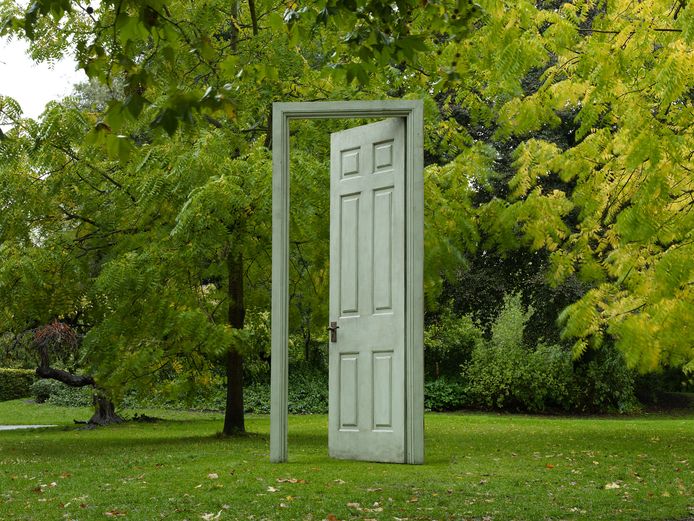
Ove Lucas, director of SIR and CBK Rotterdam, was immediately enthusiastic when he was approached for this collaboration with Art Rotterdam: “It is a good opportunity for SIR to emphasize the quality of its collection. Rotterdam has acquired a great collection of international culture through SIR”. He is also pleased with the space reserved for Rotterdam artists or artists who have been trained in Rotterdam.
The first edition
As director of SIR, Lucas, who together with Saskia van Kampen (curator at Boijmans Van Beuningen) and Tom Postma (creative director Tom Postma Design) makes up the selection committee of Sculpture Park, is used to placing sculptures in public space for a period between 10 and 50 years; an essential difference with the temporary indoor presentation. “The committee believes it is important that the proposed sculptures have an inherent quality but also work in relation to the other sculptures on the display. Of course, we are also looking for sculptures that stand out, sculptures which break with conventions,” Lucas explains the selection policy.
During the first edition of Sculpture Park, work by: Atelier van Lieshout (Ron Mandos), Caroline Coolen (NL=US), Delphine Courtillot (Dudokdegroot) Niels van Bunningen (Singular-Art), Leendert van Accoleyen (Pizza Gallery), Esther Kokmeijer (Gallery Vriend van Bavink), Norman Dilworth (Bacqueville), Krijn-de-Koning (Slewe), Hadrien Gerenton (m.simons), Indrikis Gelzis (Tatjana Pieters), Lara Almarcegui (Ellen de Bruijne) and Jan Eric Visser (Bradwolff&Partners).
During Rotterdam Art Week, you should definitely explore the dynamic Merwe Vierhavens area, which owes its name to the four ports that are located in this neighbourhood. Besides classics like design fair OBJECT and exciting new projects such as Brutus you will find many more cultural hotspots in M4H (Merwe Vierhavens).
For example, the imposing KeileZaal will be transformed for the Haute Photographie photography fair, an international art fair where booths make way for lounge chairs and coffee tables. In a refreshing presentation you will be introduced to the work of both emerging and established artists.
Be sure to visit the Huidenclub as well, in a former tannery that serves as a contemporary platform for artists, designers and activists. During Rotterdam Art Week, you can view the exhibition ‘Soundtrack for a Troubled Time’ and you can take a look at the new bookshop Vide Books, right above the cafe. Here, you will find works on graphic design, art, design and architecture and publications related to the programming of the Huidenclub.
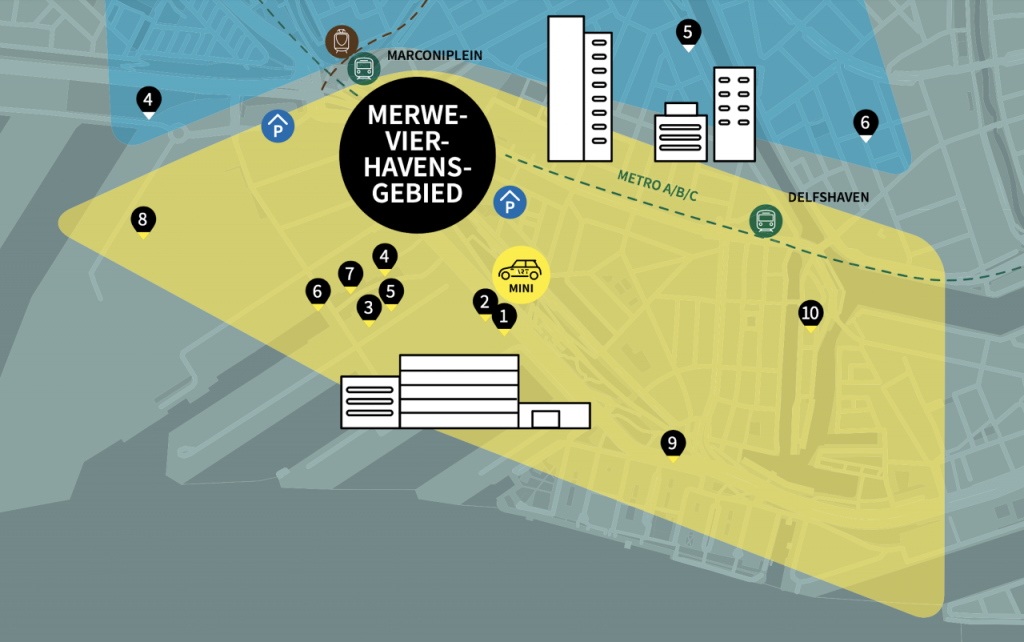
In the M4H area you will also find STEUR: a breeding ground for all creative makers, from designers to artists. It’s located in an old power station and the doors are opened to the public only once a year: during Rotterdam Art Week. We previously interviewed artist Johannes Langkamp and Plasticiet designers Marten van Middelkoop and Joost Dingemans, as well as Gilbert Curtessi [link to interview], the creative brain behind STEUR.
In Kunst en Complex, one of the oldest studio buildings in Rotterdam, thirty artists will open their studios especially for visitors to Rotterdam Art Week.
And in the Keilecollectief, you can watch an exhibition by KEILECONTEMPORARY (a collaboration with har art gallery) and participate in a series of ‘Talks and Bites’ with designers such as Wieki Somers and Ilse Evers, architects like Iris Veentjer and artists including Alexandra Phillips and Maudy Alferink.
In the Keilewerf on Saturday 21 May, you will get to know a bit more about the various crafts of the ‘Keilewervers’. Go behind the scenes in their studios and get to know some amazing and innovative products. Tip: Did the cat knock over your vase or did you break your coffee cup? Then make sure to bring them with you because at Studio Lotte Douwes, you can exchange them for a discount in the online shop. There is also a Conform Cox mini-cinema where you can watch animated films, possibly while enjoying a cocktail or a slice of homemade Städler Made pizza.
And last but not least: in the Jungle Gym concept, artists Noël Deelen and Jelmer Konjo invite you to the former warehouse and historical museum De Dubbelde Palmboom, where, among other things, a series of interactive works of art challenge you to deal with art in a different way.
Tip: you can also make free use of a MINI shuttle service in M4H (Merwe Vierhavens). Look here for more information.
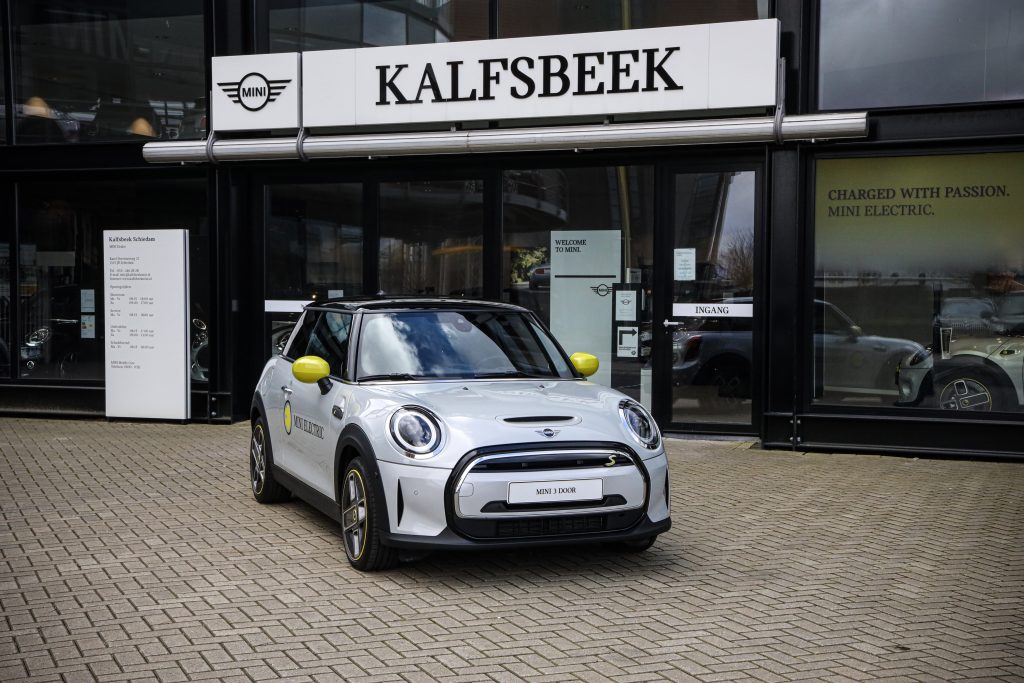
On Tuesday 17 May at 17.00, an exciting solo exhibition will open by the Belgian musician, director and photographer Tom Barman. The opening will also mark the official opening of the new Weisbard gallery. Barman sold no less than 1.7 million albums with his rock group dEUS and he is also the singer of the jazz-rock project TaxiWars. Not everyone knows that the Antwerp-based artist is also a gifted filmmaker and photographer, with a unique style and a brilliant sense of colour. In 2020 he released the photo book ‘Hurry up and wait’. A special selection from this series will be on display at Weisbard in Rotterdam from 17 May to 19 June. We asked Barman a number of questions about his working method and sources of inspiration.
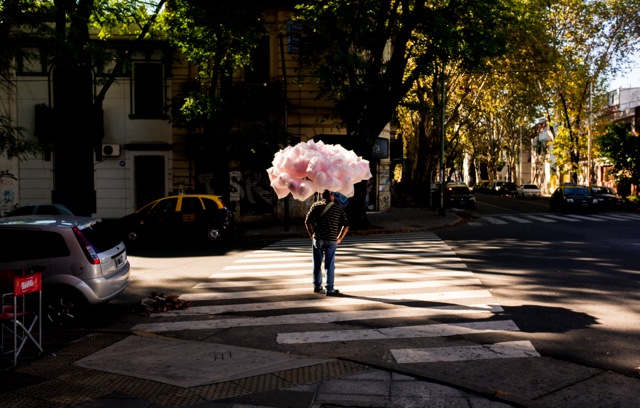
You are not only a musician, but also a filmmaker and a photographer. Do you have any more hidden talents?
I make a mean club sandwich (laughs). For me, these disciplines are actually very closely linked. Film and music in particular form a beautiful marriage. Film was initially the first thing I wanted to do. When I was fifteen years old, my mother allowed me to go to film school. That also included a photography course, but I initially failed that. At the time, I felt that taking photographs was way too boring, I needed a certain maturity to be able to muster the patience for it. But actually film, photography and music are very closely linked. Perhaps that photography stands out the most, since that contains a certain stillness. But I had to become a little older, get to my forties, before I picked up the camera again. It started out as something very private. I developed the images in my hotel room in the evenings, working on my computer. Then I started printing the pictures to hang them at home, to live alongside them. That way, I was able to figure out which things stuck after a while, and which images would fade, figuratively. After a few years, the man from the label where I developed my photos asked if I should organise an exhibition. That idea had to marinate first, because it hadn’t occurred to me at the time.
Do you come from a creative family?
My father was a professional engineer and an amateur photographer, but that’s about as far as it goes. But I’m really a kid of the video store generation. One of the best gifts I ever received was a video store membership, which was quite expensive at the time. I saw everything then: from the most obscure Japanese films to the biggest American blockbusters. That’s where my love of film and image really started. Come to think of it, in the studio, when we’re making music, we tend to reference images and colours much more than we reference music. I believe it’s called synesthesia: I see colours when I hear music.
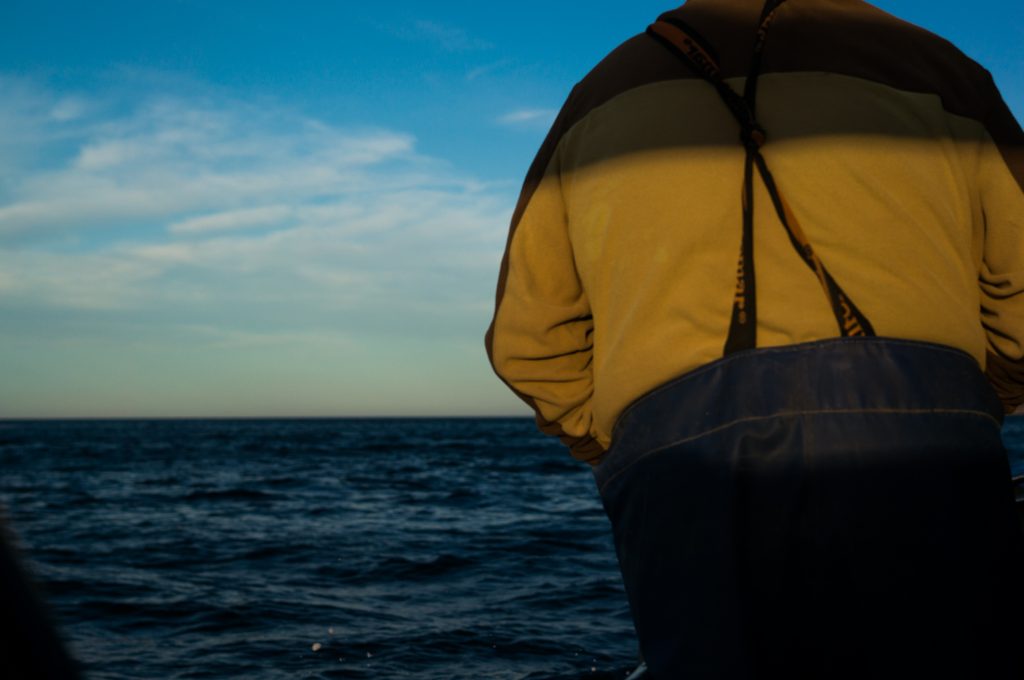
There is no text in your photo book, except for the titles, is that because you don’t want to guide the viewer too much?
I think my photography may be a reaction to my music and film projects. About ten years ago, I bought my first camera, after a brutal press tour for a dEUS record. I was completely drained after that. It started to weigh on me, it was too much. That eternal jumble of words that accompanies my other pursuits. I found that I really enjoyed talking to people in a gallery, person to person. That’s on a whole different level than talking to people after a show. Regular visitors in the art world speak much more themselves and I love that.
My goal is to convey images without words. You can talk endlessly about photos, but it might be better to just look at them. So when my publisher asked what texts we were going to include, I replied: ‘No text at all’. It’s about the photographs. [Journalist and art critic] Robbert Roos did write a text for my first exhibition, in case the public wanted more information. But I didn’t want that for the book.
What triggers you when you have your camera in your hand?
Mainly colours and structures. And light, of course. You can’t really see it separately from my day job. I have the luxury of ending up in really strange places when we tour with the band. Look, we now know the historic city center of cities like Rome, Florence and Berlin. But we get to go to the suburbs, the industrial places, and that is interesting. We often have so many hours to fill there. It almost feels like a gift, to go out and shoot like crazy.
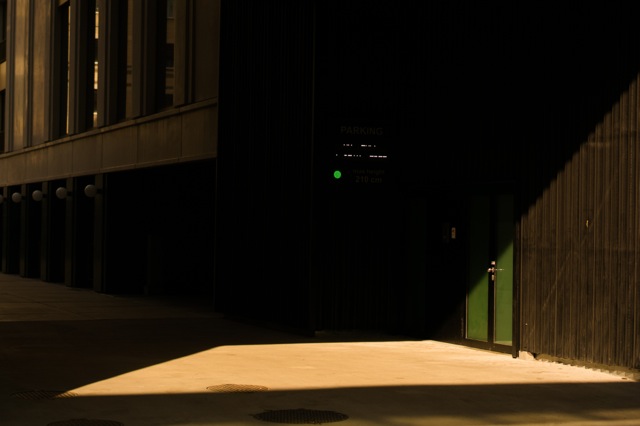
How do you work, which camera do you use?
I use a Sony Nex 5 with good lenses. An old model; small, handy, cut to my size, I don’t like those big cameras. It’s not that I always have it with me, I always very consciously intend to take pictures. I really go out specifically to take photo’s, otherwise I won’t take my camera with me.
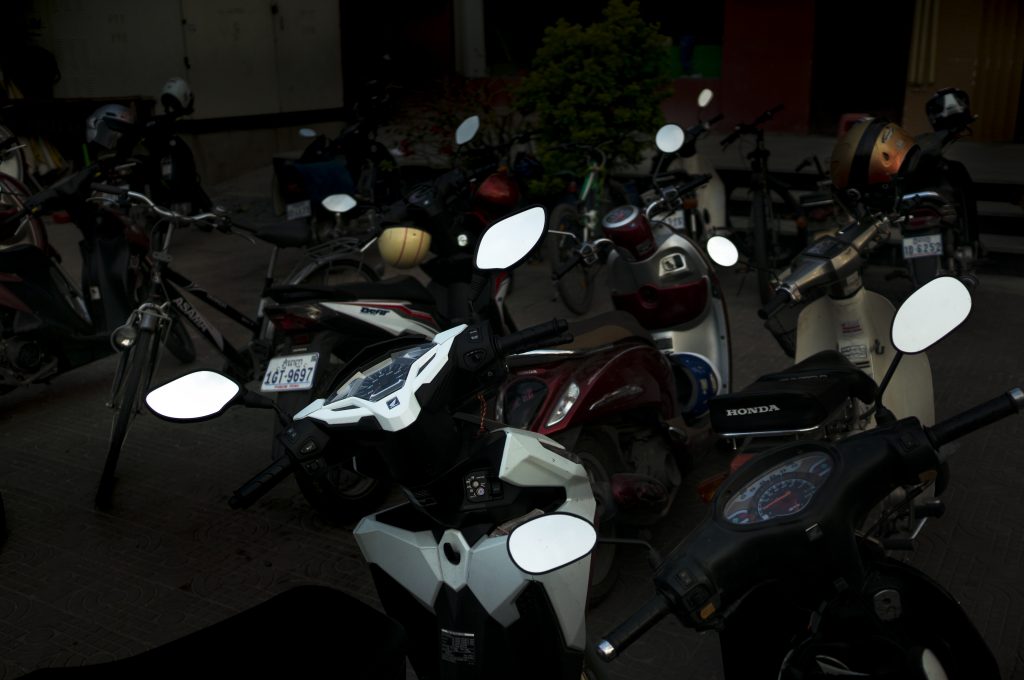
Rotterdam Art Week will kick off again from 18—22 May. What are you looking forward to the most?
First of all, I’m obviously looking forward to the opening of Weisbard, which promises to be a beautiful space. I will also be present as much as possible during the five weeks in which the exhibition is open — I felt that was a nice experience in Antwerp, to be able to really talk to people.
In addition, I visit Art Rotterdam almost every year and I look forward to doing that again this year.
About WeisbardWeisbard is a project that was created by Hugo Borst. He started the cultural meeting place as an ode to Karl Weisbard (1877-1942), an immigrant who was born in Galicia, in present-day Ukraine. Like Tuschinski in Amsterdam, Weisbard was a pioneer in the world of Dutch cinema, which is why he has left his mark on the cultural landscape of Rotterdam. With Weisbard, Borst hopes to create an accessible art destination where art can be experienced in all disciplines. A place where, in his words, a fresh pot of coffee will always be waiting for you. Borst plans to schedule four or five exhibitions a year, paired with works from his own art collection. Every first Thursday of the month, there will also be a (free) cultural event, including lectures and performances.
The shortages in the housing market are dominating the media. It is estimated that at least one million homes will have to be built to solve the housing shortage. Last month, the Correspondent wrote about 43-year-old Yesica who emigrated to Spain because she was able to buy a house there. On top of that comes gentrification, a term that city planners optimistically refer to as the ‘upgrading of neighbourhoods’, but which in practice means that rents rise to such an extent that the original inhabitants can no longer afford them. Massih Hutak experienced the same problem in Amsterdam Noord and wrote the convincing book You have not discovered us, we have always been here about the subject. This is also a problem in Rotterdam, a city in which American mega-investors and project developers like Blackstone are buying up houses en masse. Last year, 38% of all homes sold in Rotterdam were not bought by people who were planning to live in them themselves.
During Rotterdam Art Week, you can view an interesting exhibition at Het Nieuwe Instituut by Dutch photographer Désirée van Hoek, who has captured a similar movement in downtown Los Angeles since 2007. She saw exactly what the Amsterdam squatters’ movement had warned about in the 1980s: growing inequality, extreme prices for homes and the ‘Disneyfication’ of a city that focuses increasingly on tourism. The municipality of Amsterdam is going to invest ten million euros in the city center — in order to prevent the historic center from being turned into a cluster of Nutella and souvenir shops. But in the United States, the free market plays a much more significant role, which means that the consequences are much more extreme. Poverty and homelessness were not solved and therefore only became more distressing. Downtown Los Angeles has been rebranded intto the catchier DTLA and was named the fastest gentrifying region in the US in 2018. Van Hoek records these rapid changes in more than 135 images. What can we learn from this?
Désirée van Hoek also published the series in the photo book Notes on Downtown and added six interviews with specialists from the field, including urban geographer and postdoctoral researcher Cody Hochstenbach, who advises the municipality of Amsterdam on the subject, among others. These six specialists give us a potential glimpse into our own future. Van Hoek started her career as a fashion photographer and is always looking for a certain universality in her work. She is particularly interested in the ways in which people dress and in which possessions they have chosen to surround themselves with.
Curious about what else will be on show in Het Nieuwe Instituut during Rotterdam Art Week? Then take a look at the program
On 21 and 22 May, Unity in Diversity (UID) will present the Art Market, in which artists, young creatives, photographers and musicians are given a stage. You will come into contact with different types of art here — art that also happens to be for sale, so maybe you will go home with something very special. Think of photography, digital art, multimedia art, paintings, charcoal portraits and much more. At the Art Market you will find affordable art by leading and emerging artists. In addition, the organisation is hosting artistic workshops in painting and Spoken Word, especially for children between 8 and 17 years old. A DJ and live music will provide atmosphere. For this edition of #ASK, we ask Houcem Bellakoud a few questions. He co-founded Unity in Diversity alongside Jeanthalou Haynes.
Can you tell us a little more about what visitors to Rotterdam Art Week can expect?
Expect a multicultural and bustling art market, both indoors and outdoors, with a sand bar where they can enjoy the stage program. As well as an art market where visitors have the opportunity to meet inspiring creatives. Creative people who are open to teaching visitors about their artworks, culture while hopefully increasing their love of art.
Unity in Diversity’s vision is focused on diversity and connection. Rotterdam is a versatile city with a great diversity of residents, and we hope to reflect this during the art market. Our artists have diverse backgrounds: they hail from Suriname, Turkey, Chile, South Africa, Morocco and beyond. For this first edition of the Art Market we start with 33 different artists who sell affordable art.
A quote from Leni Kae that inspires me on this subject is: “Art inspires us to visit the concept of ‘unity’ and see ourselves as part of a bigger universe.”
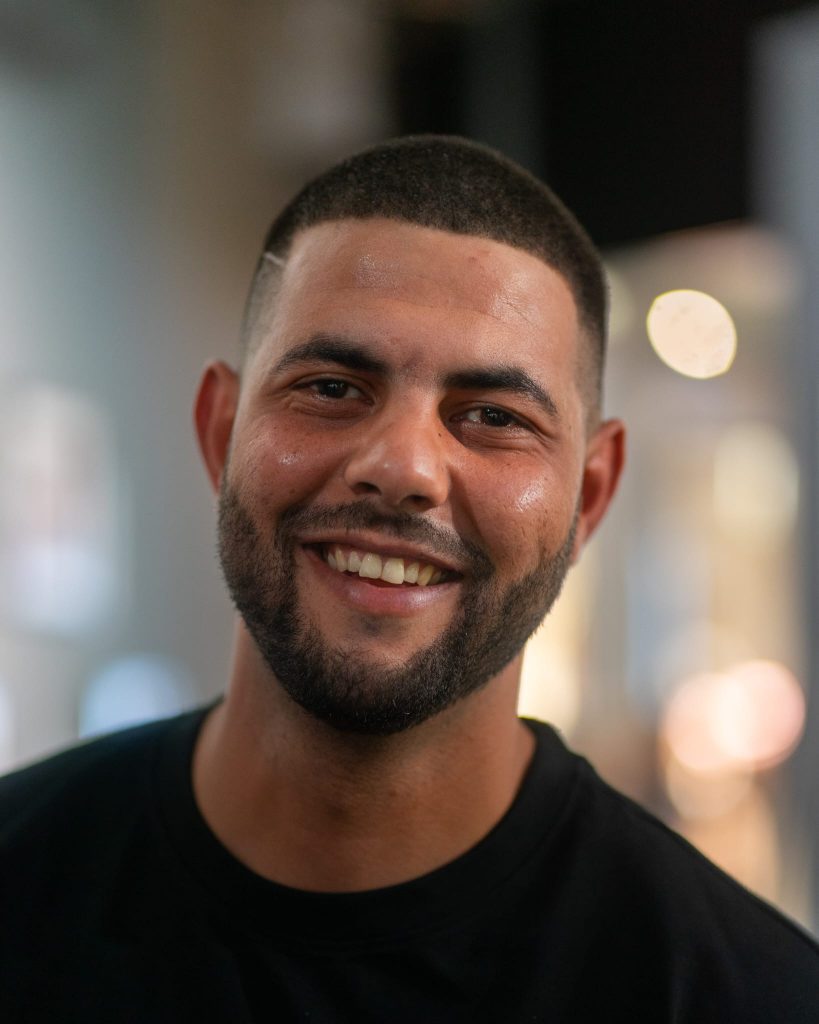
What do you think people should absolutely not miss out on?The live painting shows, the zine workshop, DIY elements and possibly 2 mini auctions per day.While strolling through the market, visitors can take a look at the various live painting shows by Kénisha Dors, Charnele Carbiere, Hotegni Dansou and Tedsky. You can also get a beautiful henna tattoo on your hand on Saturday, made by our creative Souhaila.
The auctions will depend on the children who have signed up for the painting workshop that is provided by Browns Art House. The idea is that their artworks will be auctioned afterwards so that they have the full experience of being an artist. However, the children decide for themselves whether they accept the challenge of putting it up for sale or if they want to keep the work for themselves.
Art has an image as being quite inaccessible, many people believe — wrongly — that they cannot afford any art within their budget, while you can already buy something quite remarkable for just a few tens of euros. What prejudices do you hope that visitors to the Art Market will overcome?
I like the fact that you ask me this, because we do hope to overcome the prejudice that art is excessively expensive, that art is only affordable for the elite. Art is for everyone and it’s available in all shapes and price ranges.
For this Art Market we have made a selection of multicultural artists who sell art from €10 to €300. We have deliberately chosen this price range to show that it is really possible to score beautiful, inspiring and cool works of art within any budget.We hope that this will be an eye opener: that everyone can afford art. Moreover, we hope that new creators will be born, people who have been inspired by this event to start expressing their creativity through art.
How would you describe your relationship with the city of Rotterdam?
I was born and raised in beautiful Tunisia, where I spent a lot of time with my grandparents: my grandfather, a dark man, and my grandmother, popularly called a ‘ginger’. By Tunisian standards, my grandparents have very exceptional external features. Characteristics that forced them both to break through barriers in my hometown of Menzel Bourguiba.The life stories and vision of my grandparents have ensured that I am open-minded today and that I have respect for everyone’s identity. This mindset has made me curious about the world outside of Tunisia. In June 2013 I followed my heart to Rotterdam, in search of love. To my surprise, I fell in love with a city and its diverse inhabitants.I really consider Rotterdam to be my home now. Everyone can be whoever they want to be here. The multicultural society in Rotterdam inspired me to become a photographer and a cultural entrepreneur. My goal is to bring people together and spread love through cultural projects, events and art. My favourite quote is: The universal beauty lies in the diversity of the world’s population.
Which other events are you looking forward to the most during the upcoming edition of Rotterdam Art Week?
Rotterdam Photo 2022
Tantet Nino | Face Your Fears
The Design of the Social in Het Nieuwe Instituut
As a photographer, I am naturally curious about what I can see and learn at Rotterdam Photo 2022. Visiting photography exhibitions is part of my personal development. The other events appeal to me because of the cultural and social aspect that they highlight.
If I wasn’t organising an event myself, I would definitely visit several events; That’s what Jeanthalou and I do every year. That won’t work this year, but we are grateful that we can be part of Rotterdam Art Week. Jeanthalou and I wish everyone a lot of success and especially: a lot of fun. Unity in Diversity!
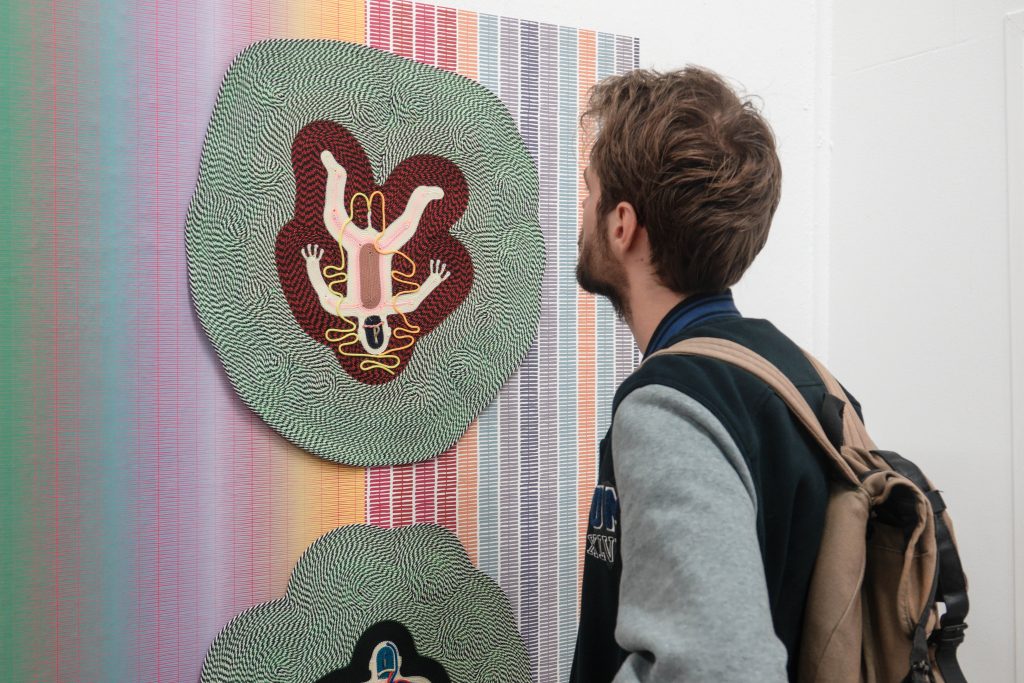
Of course, you two are insiders when it comes to art, culture and design in Rotterdam. What do you want to convey to the visitors of Rotterdam Art Week?
Erika: I want to inspire visitors to discover what Rotterdam has to offer. For those unfamiliar with the city, I would like them to discover the rich collection of public sculptures and learn more about the many art venues that keep the city full of art all year round. For those who are familiar with the city, I would like them to discover places they did not know existed. As Rotterdam Art Week (RAW) is a major event, everyone gets involved with something special, and it is a great opportunity to see all the art venues at once alongside pop-up exhibitions and events.
Anne-Marie: And there is so much to do this year that for the 2022 edition, we opted to connect all of the Rotterdam Art Week participants in 5 Do-It-Yourself routes. It offers the visitor a nice framework to orient themselves and it allows you to explore the city in surprising ways.
Erika: These routes, which visitors can walk on their own, provide them with enough information to avoid feeling lost and take them on routes they would not otherwise take on their own. Each route tells a different story. For me, they connect the locations in the same way that artworks are brought together for an exhibition.
Do you want to discover the cultural side of Rotterdam on your own, in a fun and accessible way?
Then our Do-It-Yourself routes might be just the thing for you. They were composed in collaboration with Art Index Rotterdam, who also offer a series of guided tours. And there’s definitely something in the mix for you: whether you like fashion or photography, street art or a look behind the scenes in the artist’s studio. You’ll get to places that aren’t accessible during the rest of the year. For this edition of #ASK, we interview Erika Vati (initiator/owner of Art Index Rotterdam) and Anne-Marie Ros (Art Index Rotterdam tour partner).
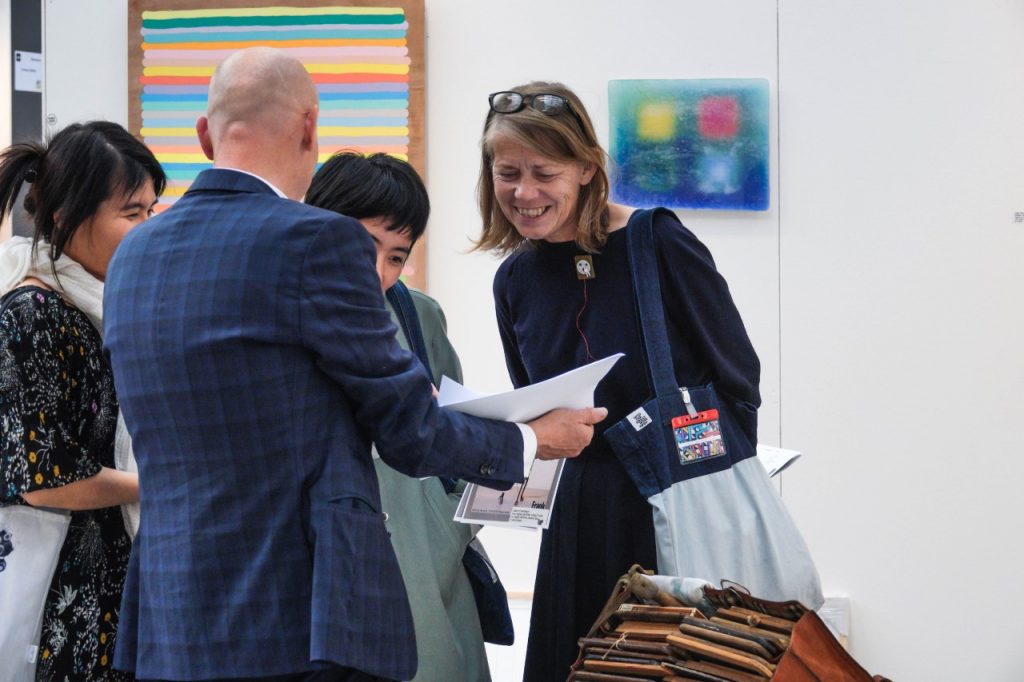
What do you hope people will discover and how do you hope to surprise them?
Anne-Marie: I hope that people will be surprised by the enormous range of art and design. That they allow themselves to be led by a sense of curiosity. During Rotterdam Art Week, the cultural scene offers a lot of quality that can be discovered throughout the city, often away from the beaten track.
Erika: I hope everyone will discover inspiring artworks that give a sense of fulfilment or transformation. I believe art is about us and evolves with us. Rotterdam has a wide variety of art venues, with something for everyone. From contemporary painting to photography, performance, and open studios, from the world’s best artists to the latest emerging talent, all forms are there. I must stress that many things are created especially for this week: It is an important event.
I want to make the local art scene more visible and accessible. For me, people must discover and engage with art in a more personal way. This is the aim of the DIY Walks. Following these routes allows them to choose the time and speed they want and make the city and its art their own. The routes are free to download from the RAW website, and you can print them out as a PDF or follow them on your phone while you walk.
What surprised you the most?
Anne-Marie: I am pleasantly surprised by how the city keeps moving. By the enormous variety of what’s on offer, with many young artists and newcomers such as Depot Boijmans Van Beuningen, Weisbard, the Huidenclub, ROOF-A, Brutus, the Jungle Gym, Jewel. Rotterdam at Object Rotterdam and the Unity in Diversity art market in Fruitvis.
Erika: I agree with Anne-Marie. It is the number of exhibitions and events on offer and the energy of the city. This did not so much surprise me as impress me.
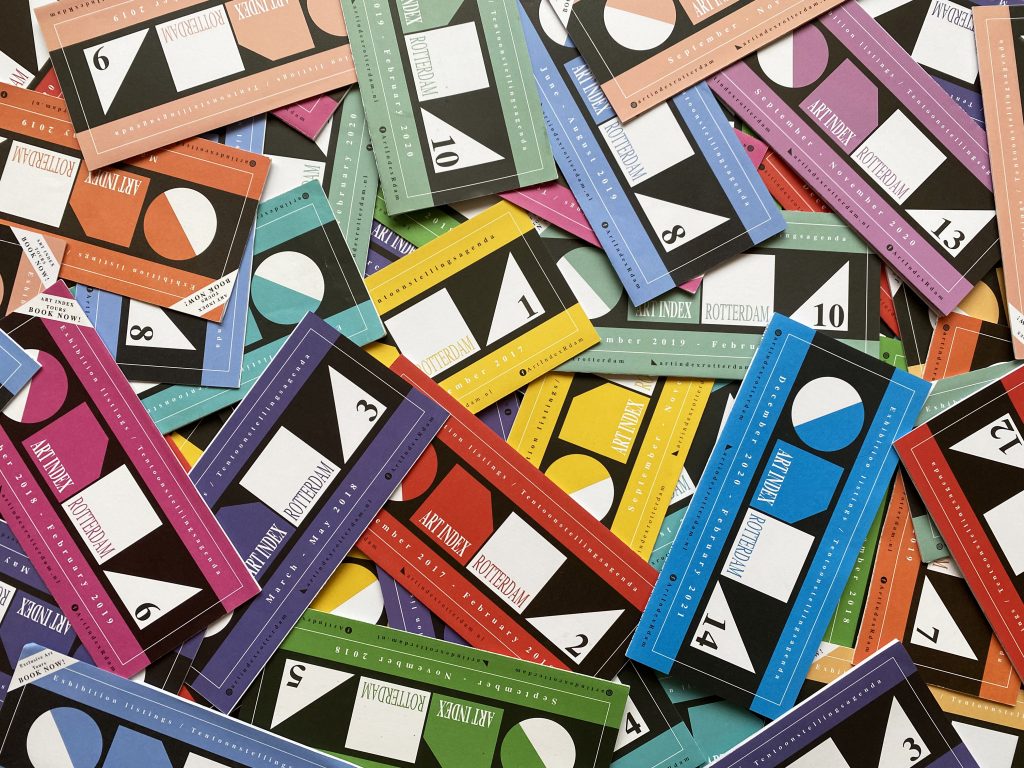
How would you describe your relationship with the city of Rotterdam?
Anne-Marie: It was art that drove me to Rotterdam. Because of the unique dynamics here, this is actually the only city in the Netherlands where I would ever want to live. It’s always changing and I love its no-nonsense attitude. I got off to a flying start as an entrepreneur in 1999, with a series of cultural projects during the Cultural Capital year. In an effort to guide visitors, I wrote about the city for 10 years, until we became popular and I shifted my focus to developing unique art tours for professionals and a wider art-loving audience. I have been Erika’s tour partner since the fifth edition of Art Index Rotterdam. With specific tour concepts, we connect with the art scene, we offer guests a platform, we seek connections in various art and cultural events and we never miss the public art collection and street art, in the context of an ever-changing city. We know what is happening in the city, thanks to our own background, combined with an extensive local network, my art tours and the fact that we have been playing a structural role since 2018 in offering an up-to-date overview of contemporary art in Rotterdam. I use the city as my canvas and with an appealing tour offer I aim to colour the art experiences of a broad target group. On request, I also provide tailor-made tours, routes and art walks — for Rotterdam Art Week, but also for private individuals and groups.
Erika: I came to Rotterdam a few years ago, and my home is here now. My relationship with the city started with Art Index. It came out of a personal need to have a central platform focusing on Rotterdam’s contemporary art scene, and I found that many people had the same desire. Since then, Art Index has been growing. Today it is not just a list; we also organise activities and events, and since 2020 we have had an online magazine with interviews and video reviews. I have witnessed the rapid changes in the cityscape and art scene, and I feel I am living through these changes, making my relationship with this city even stronger. I am committed to fostering a deeper understanding and enjoyment of contemporary art by engaging the Rotterdam art scene in dialogue and drawing attention to local exhibitions, artists, curators, and their work. I seek to give a voice to active participants in the art scene so that the public can learn about them and understand their initiatives and their passions.
What are you most looking forward to during the upcoming edition of Rotterdam Art Week?
Anne-Marie: It’s always exciting when the city is buzzing with art. It’s a time to network, to be surprised and inspired while discovering new things. I’ll be sharing this enthusiasm with others. Besides Art Rotterdam and Object Rotterdam — my go-to events during Rotterdam Art Week — I will also do all five routes myself, allowing myself to be surprised by places that I don’t visit that often. I am curious about the group shows and the open studios. About Weisbard and ROOF-A. The New Current in Brain Park and PB3. Studio Seine and A Tale of a Tub, both hidden in West. The program in Garage Rotterdam, the STEUR building, HI.M, Het Nieuwe Instituut, Fruitvis, the Kunsthal, the Keilepand and of course Kunstavond XL. And by the ways in which the Kunst&Poetry couples show original art at various locations on the Wilhelminapier, Katendrecht and the Afrikaanderwijk.
Erika: Outside of Art Rotterdam, I would like to highlight some of the exhibitions that will open during RAW. For example, the Hamburger Community resident artist Simon Keizer’ exhibition at Roodkapje, where you can discover the healing potential of art and every day will be different. I look forward to the programme at STEUR. An exciting selection of artists will have a joint presentation, and in the main hall, two internationally recognised residents of M4H, designer Sabine Marcelis and artist Joep van Lieshout will transform the place into a surrealist playground. Finally, I would like to highlight the ever-exciting audiovisual arts of The New Current, whose mission is in line with ours: to bring attention to great art and open up chances for young talents. As an insider, I find it important to mention the presentation of Open Studio Borgerstraat, which includes 100+ posters made especially for RAW about the ongoing debate on the lack of studio space in Rotterdam.
Anne-Marie: I’m also looking forward to organising the Meet Rotterdam tours (free of charge) during Rotterdam Art Week. It will mark the 3rd year that Erika and I collaborate as an Art Index team. On Friday 19 May at 11.00, we host the Meet Rotterdam @ Art Rotterdam tour and on Saturday 21 May at 15.00, we organise the Meet Rotterdam @ Object Rotterdam tour. It is special to me because we design these tours together. We are lifting the layer of Rotterdam-based galleries, artists and makers, as it were. This focus automatically creates themes that surprise even us, time and again. It is also a great way to get to know us as a team, the wider art scene and art & design in Rotterdam, all in an informal atmosphere.
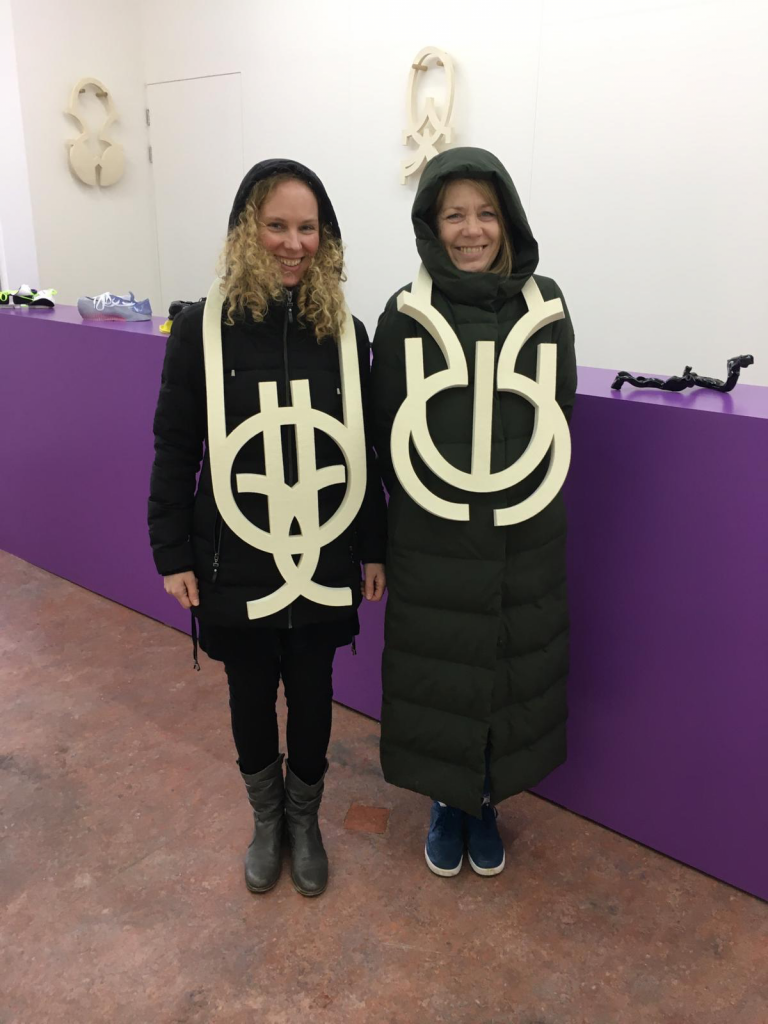
Tip
Don’t feel like going out on your own? Then book a ticket for one of the guided Art Index Rotterdam tours. You can register by email at [email protected].
• The Museum Park Art Walk on Saturday 21 May from 10:30 – 12:00. Get a ‘quick start’ with, among other things, a tour on the roof of Depot Boijmans Van Beuningen, a Kunsthal mini tour in the exhibition Calder Now! and a visit to the nearby House of Photography and Weisbard.
• The First Steps Art Walk on Sunday 22 May from 10:00 – 12:00/30. An original view of the city by following the art in search of the origins of Rotterdam. A walk full of history, street art and architecture. This connects to Do-It-Yourself route 3: Center/North/East.
Plastic has a reputation problem, in part because many people tend to think of organic cotton and biodegradable materials when we talk about sustainable materials. But then we ignore the fact that recycling plastic is an exceptionally good way to give existing plastic a new life. And that is exactly what the Rotterdam-based company Plasticiet does. Instead of wasting it, they transform plastic into beautiful, strong and functional materials, inspired by natural stone. The result is a series of fresh and aesthetic terrazzo designs that are then transformed into timeless design objects, both by themselves and by other designers. For example, they were responsible for furnishing an Ace & Tate store, a display for Collectible Curates at MAD Paris, the interior of a London hairdresser, the entrance of the Interieur Biennale Kortrijk as well as their own series Mother of Pearl.
During Rotterdam Art Week, you can visit their studio in the STEUR building in Rotterdam, which will be open to visitors for the occasion. Gilbert Curtessi is the driving force behind this breeding ground for creatives. He wanted to create a place for makers from various disciplines, which is why you’ll find studios there of artists including Ward van Gemert and Laurids Gallée and designers like Sabine Marcelis. What is it like to work in such a dynamic place? For this edition of #ASK, we ask a number of questions to the faces behind Plasticiet: Marten van Middelkoop & Joost Dingemans.
How and why did you start Plasticiet? Where does your focus on sustainability come from and do you still have big dreams that you want to achieve with Plasticiet?
We started Plasticiet while we were studying at art school, where we were tasked with maneuvering a future economy, actually envisioning it. I (Joost) always have trouble realising my designs when I use virgin (brand new) material, so recycling or sustainable creation is a must for me. Marten and I have been to India, where we saw all kinds of craftsmen on a small scale, working in the most creative ways, making utensils for the local industry, all made from waste. This was, and still is, a huge source of inspiration for us; nothing has to be wasted. We decided during the process that we wanted to make a semi-finished product from plastic, to allow users to let their own creativity flow, but also to take responsibility. What you make yourself is worth more than something you buy in a store. Our dream is to produce in such a way that we can find the focus to design as much as possible with the material ourselves. This would mean that we are releasing a large amount of recycled plastic into the world and that we can fully pursue our passion.
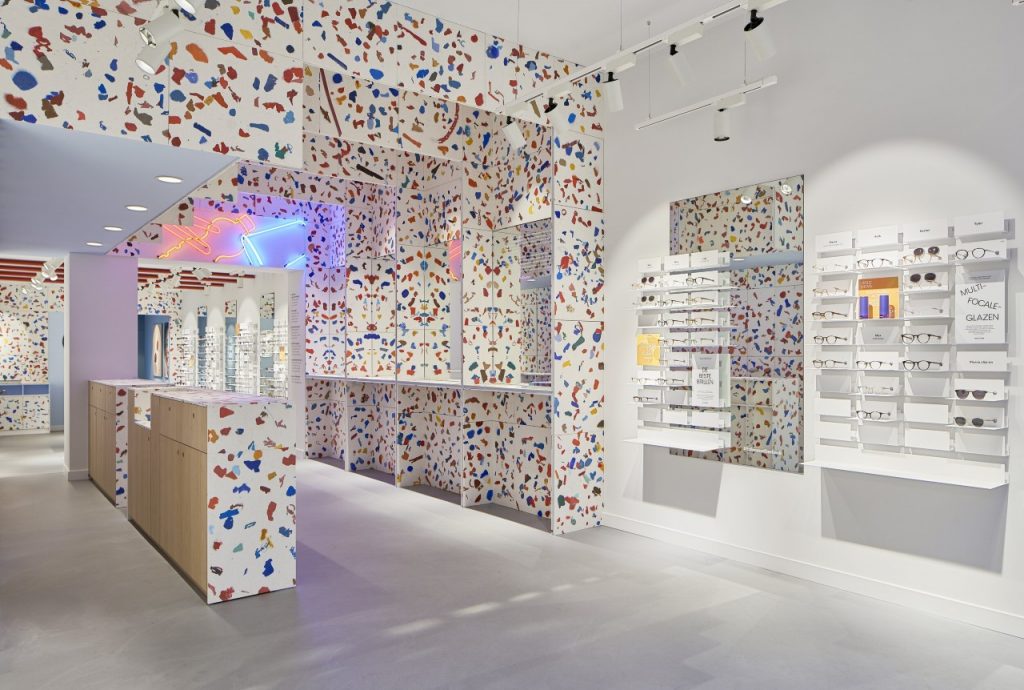
What is it like to work in the STEUR Building? What makes this breeding ground special and in what ways can you further develop your practice there?
We have been in the building for about 4 years now. What makes this place special is that there are all kinds of different creatives and that you are outside of the busy city centre, in an industrial area that sometimes appears deserted. But a lot has changed over the past four years and more and more people and restaurants/cafés are heading this way. There’s an element of fun to that, but it’s also a clear form of gentrification. At the moment we have the freedom to do what we want without causing a lot of inconvenience, because it is so sparsely ‘populated’ here.
How would you describe your relationship with the city of Rotterdam?
I moved here about 8 years ago while I had never actually been to Rotterdam. I started to appreciate the city more and more and when I come home, now barely recognise my past life. Rotterdam can be an ugly city at first, but as it grows on you, you start to find the pearls that actually make the city what it is. I feel at home here.
Since 2014, TEC ART Festival has been an integral part of Rotterdam Art Week. During this week, the entire city is dominated by contemporary art and design, and TEC ART adds, among other things, rebellious exhibitions, talks and big parties to that formula. Their program in WORM is linked to urgent social developments and explicitly relates to the impact of technology on our society, both today and in the future. TEC ART works at the exciting intersection of art, creative technology and science, delving deeper into topics such as fake news, artificial intelligence, the dominance of major tech companies, and robotics. For this edition of #ASK, we interview Kees de Groot, creative director of TEC ART, about what we can expect from the festival this year.
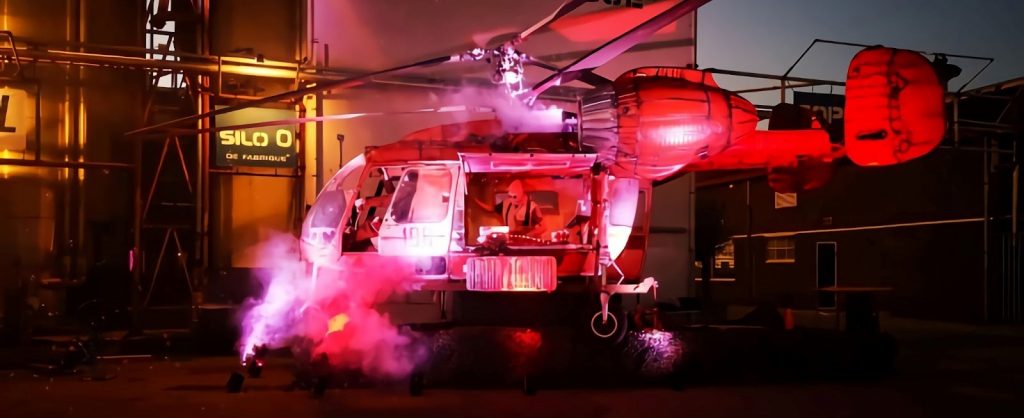
Can you perhaps give us a sneak peek of what we can do and see during TEC ART this year?
The closed-off Boomgaardstraat next to WORM will once again be transformed into a playful open air cyberpunk arena, a festival site with robotics, spacey performances, immersive installations, performances, fire and spectacle. An old Soviet helicopter (which ended up in Hungary via Russia and served as an air ambulance and later as an agricultural spray helicopter) will act as DJ Booth. The futuristic MadMax Wastelanders of Abacustheater will be driving around. The Move Around Soundsystems party everywhere. And as befits TEC ART, the program is chock-full of games and video installations.The exhibition rooms of TEC ART contain a mix of top international art and up-and-coming talent. The absolute highlight will be the game installation NEXT SPACE REBELS by Floris Kaayk, winner of the De Volkskrant Visual Art Prize and a Golden Calf film award. Next Space Rebels players are part of an activist organisation that builds its own rockets and launches them into space to ensure an independent, free internet. You also shouldn’t miss THE NEMESIS MACHINE by the English artist STANZA; a 50 m2 sculpture about data control and surveillance technology.
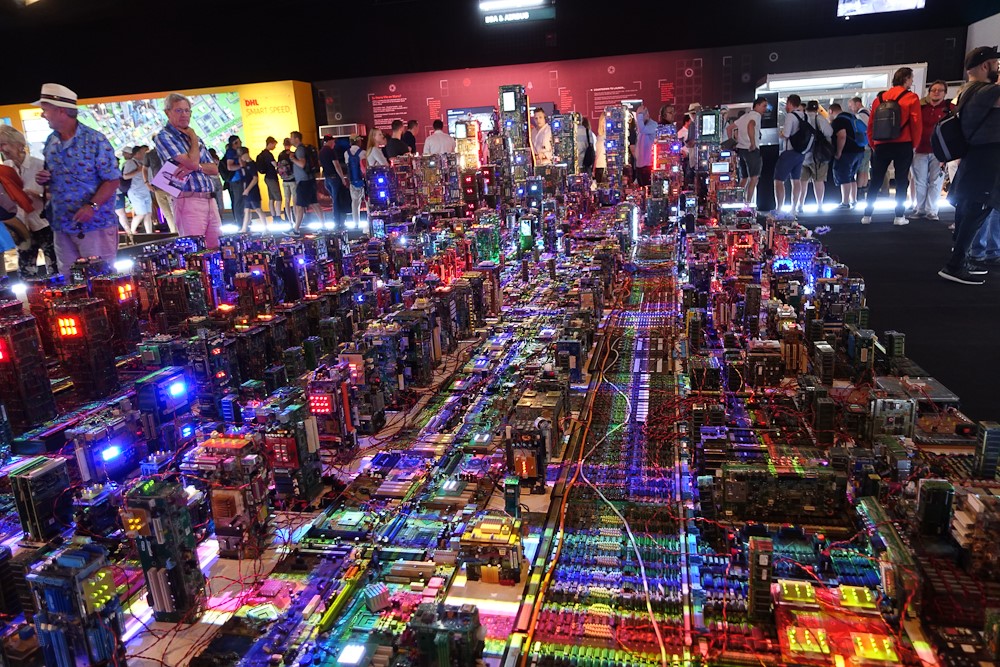
What is involved in setting up such a festival?
We try to actively involve the participating artists and the public, both with each other and our theme. This year that is SO FUTURE, from Solarpunk to Metafuck. This creates new collaborations and connections. The festival experience should feel like an organic whole, and not just a series of separate, standalone programs. TEC ART, as well as sister festival GOGBOT in Enschede, effectively function as GESAMTKUNSTWERKEN. In terms of production, this means being flexible and building (and dismantling) an extreme amount in a short span of time. The entire Boomgaardsstraat will be completely transformed and made unrecognisable within a week.
How would you describe your relationship with the city of Rotterdam?
I think Rotterdam is a fantastic and inspiring city. The cultural climate, the architecture, the water, the ports, the scale, the people. But especially the city’s focus on the future 🙂
What are you most looking forward to during the upcoming edition of Rotterdam Art Week?
All of the beautiful art and the reactions of the visitors. During Rotterdam Art Week, you really notice that the overall vibe in the city is completely dominated by art. We hope some TEC ART will offer a welcome change within the complete program. It was made possible in part by WORM, Rotterdam Festivals and OCW.
Watch the Next Space Rebels trailer here
You may have already spotted the innovative work of the German artist Johannes Langkamp in the new exhibition ‘Art is the Antidote’ in Museum Voorlinden. Or in the new depot of Museum Boijmans van Beuningen, where his work “Pleased to Meet You” is exhibited: a bench with a cheerful, yellow conveyor belt system. That’s the thing about Langkamp’s work, it often evokes a certain recognition. Movement and a certain playfulness are recurring elements in his practice. As a viewer, you sometimes wonder how his machines function exactly. During Rotterdam Art Week, you can visit his studio in the Steurgebouw in Rotterdam, which will be open to visitors for the occasion. Gilbert Curtessi founded the Steur building, a creative incubator for makers from various disciplines, which is why you’ll find studios there of artists like Ward van Gemert and Laurids Gallée and designers such as Sabine Marcelis. Today we speak with Johannes Langkamp, whose work was purchased by Museum Voorlinden last year during Rotterdam Art Week.
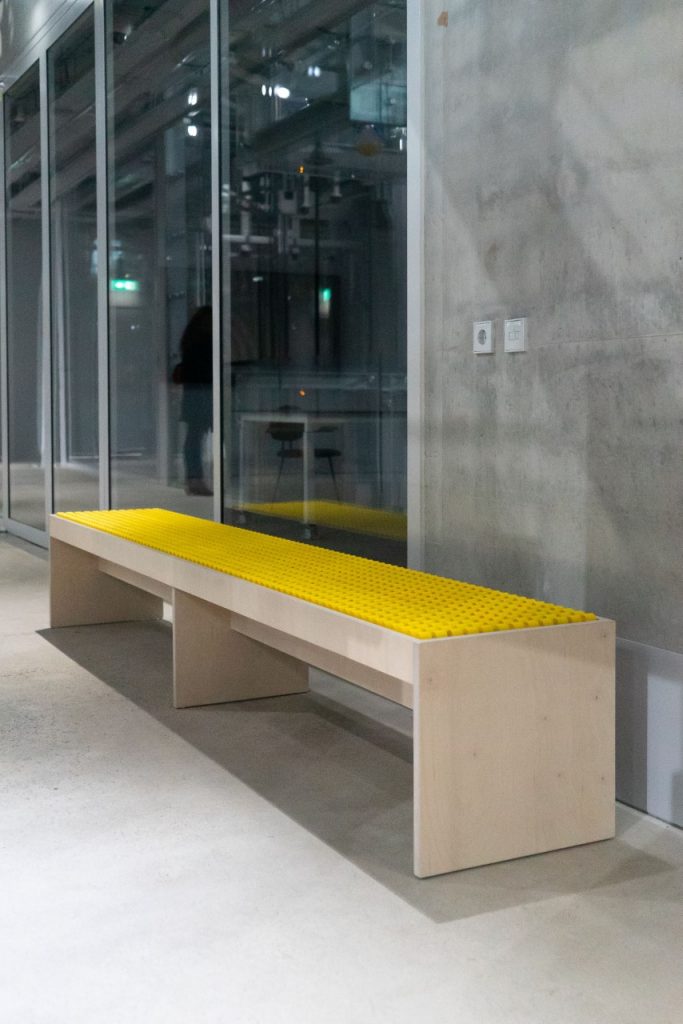
How do your kinetic works come about? In what ways do you play with the viewer’s perception and what reaction do you hope to evoke?
I mainly play with my own perception and wonder. Thanks to everyday small moments, I often wonder: what happens if…? What happens if I drop a sheet of paper from a building? Or when I roll an actively spraying aerosol can across the floor? What would happen if I make a wooden bench with 1000 wheels? That one question is always followed by another, in which unexpected elements play a leading role. By playing with situations or materials, I discover things that I subsequently try to grasp through kinetic models or sculptures. Basically it is a short moment of questioning, followed by a long process of material experiments. My work arises from curiosity and after that I mean to find out what effect the work has on other people. Whether they also marvel at the strange sensation. How does my perception mechanism work and how can I play with that or break through fixed viewing patterns to activate something new?
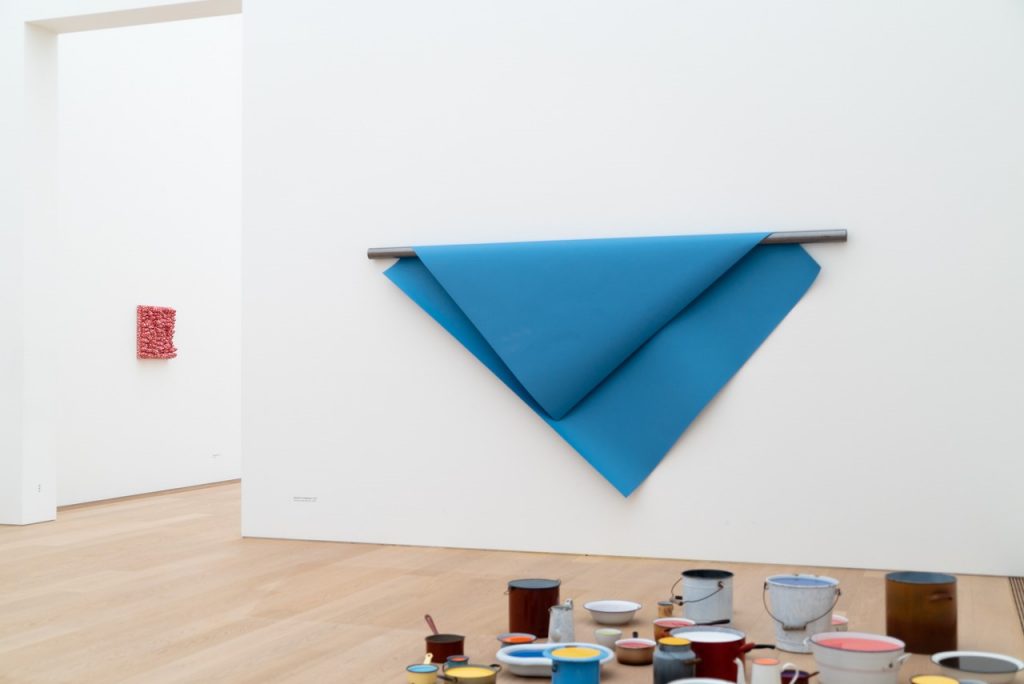
What is it like to work in the Steur Building? What makes this space special and in what ways are you able to develop your practice further there? What can visitors expect when they come to visit your studio?
The environment in the Steur Building, being surrounded by all kinds of fellow makers, thinkers and doers, is really important. The people have a willful and driven work mentality, which feels like coming home to me. Every now and then, I forget that I actually have a quite abnormal daily life, thanks in part to the STEUR work environment. During Rotterdam Art Week, these remarkable working environments are made accessible to the public. Workplaces that exist for individual working methods. In my case, that is a studio in which I enter a search for the unknown, by experimenting and failing. After all, failures offer the most unexpected and surprising outcomes. In other words, Rotterdam Art Week offers everyone an opportunity to visit a location-specific exhibition with open workshops, where, in addition to the results, the production processes are on show. That includes numerous tests and failed prototypes. In the arts, the division between what constitutes clutter and art can be unclear sometimes.
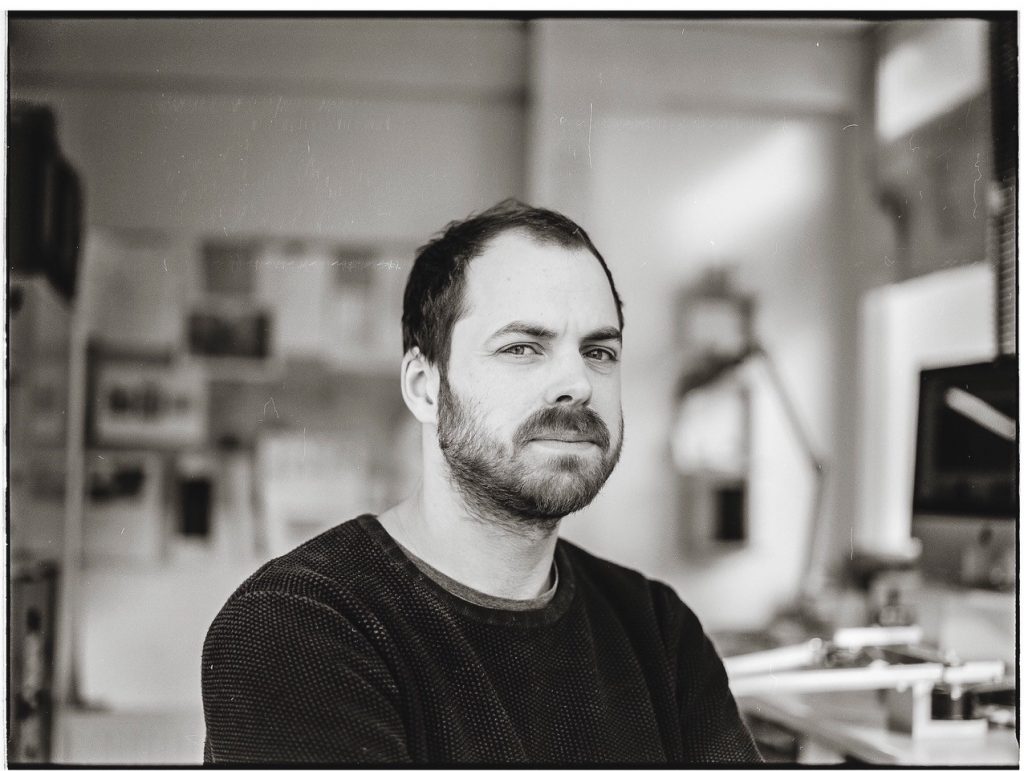
How would you describe your relationship with the city of Rotterdam?
Rotterdam has always been my favourite destination in the Netherlands, even before I came to live there 12 years ago. The raw side of Rotterdam suits my choice of materials and my openness to experiment. Making the open connection with people and the relationship to the material. The contrast between fragile and industrial suits Rotterdam as well as my work. I feel alive when I’m allowed to flow, mix and form, in a city that is constantly on the move (and will hopefully remain to do so).
What are you most looking forward to during the upcoming edition of Rotterdam Art Week?
These are exciting times, this year I will participate in the Art Rotterdam art fair in the Van Nellefabriek for the very first time, in the booth of Rademakers Gallery from Amsterdam. For this occasion, I have made a number of new works. Kinetic sculptures in which your gaze is confused by means of paper spirals, that move through each other and are driven by gears. I also show a new version of the work ‘Pleased To Meet You’, the wooden bench with hundreds of wheels as a seating surface. In this work, the user is being offered some room for discovery. But I’m also looking forward to the exhibition in the Steur Building. Last year this was a first, in which I was able to sell two works to Museum Voorlinden, which was of course exceptional. This work is currently on show in the exhibition ‘Art is the Antidote’. For the upcoming opening of the Steur Building, I am making a work in the same location. This new installation requires a renewed use of the wall. You can see how that works during Rotterdam Art Week.